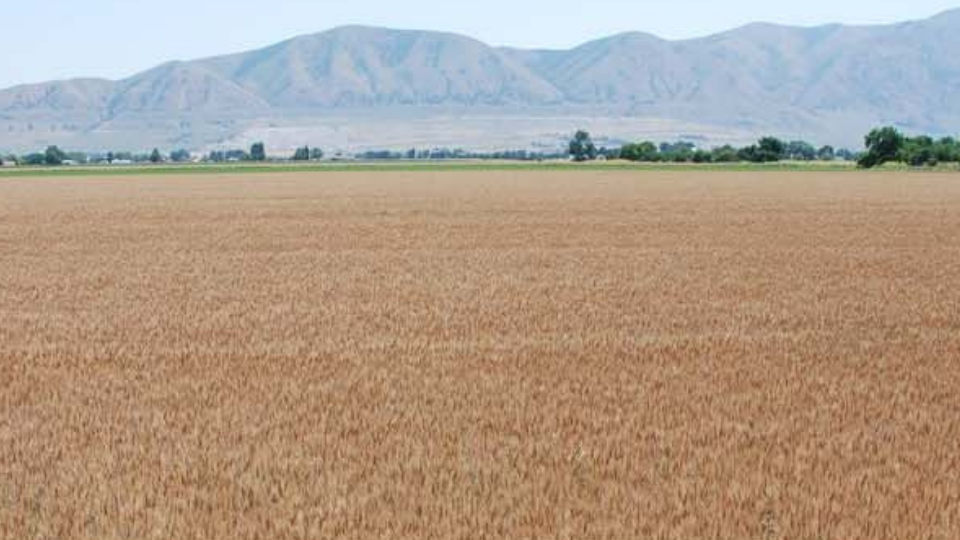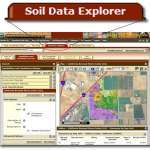Are you struggling to get the most out of your crop rotation? It’s a common challenge that many farmers face.
Crop rotation is a powerful tool that can lead to healthier soil and higher yields. But, when mistakes are made, it can do more harm than good. You may not even realize that some of the practices you’ve adopted are keeping you from reaching your farm’s full potential.
We will uncover the top mistakes farmers make in crop rotation and provide you with actionable insights to avoid them. By addressing these pitfalls, you can enhance your farm’s productivity and sustainability. Keep reading to discover how you can transform your farming practices and achieve better results.

Improper Planning
Improper planning in crop rotation can significantly impact a farm’s productivity. Farmers often overlook crucial steps that lead to reduced soil health. Understanding common mistakes helps avoid these pitfalls and ensures better crop yields.
1. Failing To Analyze Soil Needs
Each crop has specific nutrient requirements. Ignoring these can deplete soil nutrients. Farmers must test soil regularly to assess its condition. This helps in selecting the right crops for rotation.
2. Overlooking Pest And Disease Cycles
Some pests thrive in certain crop cycles. Planting susceptible crops successively increases pest issues. Farmers should track pest patterns to break these cycles. Choosing resistant crops can minimize pest damage.
3. Ignoring Weather Patterns
Weather greatly affects crop success. Unpredictable changes in climate can devastate crops. Farmers need to consider local weather trends in their plans. This helps in timing the planting and harvesting correctly.
4. Not Considering Crop Compatibility
Certain crops don’t grow well together. Their root systems might compete for nutrients. Farmers should research compatible crops for rotation. This ensures a balanced nutrient uptake.
5. Setting Unrealistic Goals
Ambitious plans can lead to disappointment. Setting achievable goals is crucial for success. Farmers should plan rotations that match their resources. This prevents overextension and ensures sustainable farming practices.

Ignoring Soil Health
Ignoring soil health can severely impact crop rotation success. Healthy soil is the foundation for productive farming. It influences nutrient availability, water retention, and plant growth. Without attention to soil health, crops may suffer. Farmers often overlook this crucial aspect, leading to poor yields and weak plants.
Understanding Soil Composition
Soil is more than dirt. It consists of minerals, organic matter, water, and air. Each part plays a role in crop health. Farmers must know their soil’s composition. It affects how crops absorb nutrients. Testing soil regularly helps understand its condition.
Neglecting Soil Testing
Skipping soil tests is a common mistake. Testing reveals nutrient levels and pH balance. These factors are vital for crop growth. Without testing, farmers may apply wrong fertilizers. It can lead to nutrient imbalance and crop stress.
Overlooking Organic Matter
Organic matter enriches soil and aids plant growth. It improves soil structure and nutrient availability. Farmers often ignore adding compost or manure. Lack of organic matter can result in compacted soil. This makes it hard for roots to grow and absorb nutrients.
Ignoring Soil Erosion
Erosion strips away topsoil, reducing fertility. Wind and water can cause significant damage. Farmers must employ strategies to prevent erosion. Cover crops and contour farming help protect the soil. Ignoring erosion can lead to barren fields.
Disregarding Soil Moisture Levels
Water is crucial for crops. Soil’s ability to retain moisture affects plant health. Overwatering or underwatering can harm crops. Farmers should monitor soil moisture regularly. Proper irrigation ensures crops get the right amount of water.
Overlooking Pest Management
Crop rotation is crucial in sustainable farming. But, many farmers overlook pest management in this process. Ignoring pests can lead to serious crop damage. Effective pest management ensures healthier crops and better yields. Let’s explore common mistakes in pest management.
1. Not Identifying Pest TypesFarmers often fail to recognize different pest species. Each pest has unique behaviors and needs specific control methods. Misidentifying pests leads to ineffective pest control. Proper identification is the first step to managing pests.
2. Ignoring Pest Life CyclesPests have specific life cycles. Timing is key in pest management. Some farmers neglect this, leading to poor pest control. Understanding life cycles helps in applying treatments at the right time.
3. Over-reliance on Chemical PesticidesMany farmers use chemical pesticides excessively. This can harm beneficial insects and the environment. It also leads to pest resistance. Integrated pest management offers a balanced approach.
4. Neglecting Crop DiversityCrop diversity plays a role in pest management. Monocultures attract specific pests, increasing infestation risks. Mixing crops can disrupt pest habitats and reduce pest populations.
5. Failing to Monitor Pest PopulationsRegular monitoring is essential. Some farmers skip this step. Without monitoring, pest outbreaks go unnoticed until it’s too late. Consistent checks help in early detection and control.

Neglecting Crop Diversity
Crop rotation is vital for maintaining soil health and boosting yields. Neglecting crop diversity can weaken this agricultural practice. Diverse crops help prevent soil depletion and reduce pest problems. Using different plant families can improve soil structure and fertility.
Understanding Crop Diversity
Crop diversity means planting various types of crops. It goes beyond alternating between two crops. Farmers need to think about plant families. Each family offers unique benefits to the soil. For example, legumes fix nitrogen in the soil. Grasses help prevent erosion.
The Risks Of Limited Diversity
Limited diversity can lead to nutrient depletion. Planting the same crop repeatedly drains the soil. It becomes less fertile over time. Pests and diseases also become a bigger issue. They thrive in environments with little crop variation.
Benefits Of Diverse Crop Rotation
Diverse rotations can break pest cycles. This reduces the need for chemical treatments. A mix of crops improves soil structure. It enhances water retention and aeration. This leads to healthier plants and better yields.
Building A Diverse Rotation Plan
Start by identifying different crop families. Include legumes, cereals, and root crops. Rotate them strategically across seasons. This helps balance nutrient uptake. It also keeps pests guessing. Over time, soil health improves.
Steps To Implement Diversity
Choose crops that match your soil type. Consider local climate conditions. Set goals for nutrient management. Plan rotations that meet these goals. Monitor soil and plant health regularly. Adjust plans as needed.
Conclusion
Mistakes in crop rotation can hurt harvests. Farmers often neglect soil health. This affects plant growth and yield. Rotating crops wisely boosts productivity. Avoid planting the same crop repeatedly. It depletes nutrients and invites pests. Balance crop types to enrich soil naturally.
Monitor crop results each season. Adjust practices based on observations. Plan crop sequences carefully. Better planning leads to healthier soil and better yields. Learn from past errors. A small change can make a big difference. Implement smart rotation strategies. This benefits both crops and the environment.
Sustainable farming practices ensure long-term success for farmers.



